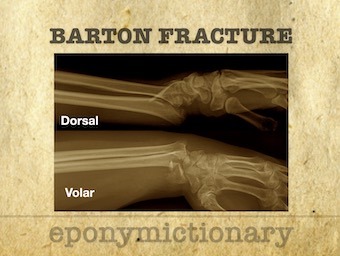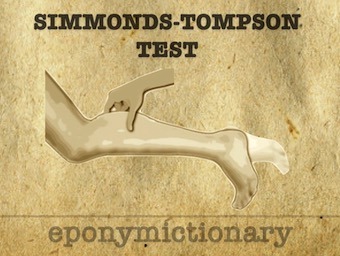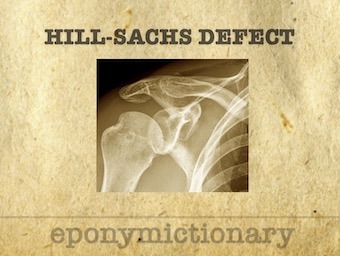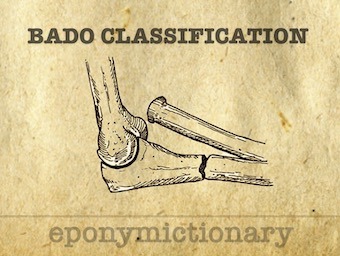
Weil disease
Weil disease refers to the severe icteric form of Leptospirosis. Bacterial infection with worldwide distribution.

Weil disease refers to the severe icteric form of Leptospirosis. Bacterial infection with worldwide distribution.

Legg-Calvé-Perthes disease (LCPD): avascular necrosis (AVN) of the proximal femoral head. The disease is usually insidious in onset and may occur after an injury to the hip.

Barton fracture: Intra-articular distal radius fracture with radiocarpal joint subluxation. John Rhea Barton described Barton fracture in 1838.

Simmonds-Thompson Test for evaluating achilles tendon rupture. Also known as the Simmonds Test (F.A. Simmonds) or Thompson Test (T. Campbell Thompson)

Cullen sign: superficial bruising in the subcutaneous fat around the umbilicus. 1918 Thomas Cullen (1869-1953) ruptured ectopic pregnancy

Hill-Sachs lesion (1940) Cortical depression of posterolateral head of the humerus related to impaction of the humeral head

José Luis Bado (1903-1977) was a Uruguayan surgeon who created the Bado Classification of Monteggia fractures in 1967 to define 4 Types

Malgaigne fracture is an unstable fracture of the pelvis. First described in 1847 by French surgeon Joseph François Malgaigne (1806 – 1865)

History of the Development, and widespread adoption, of the Pulmonary Artery Catheter (PAC) or Swan-Ganz catheter

Dock’s murmur: Early diastolic murmur when there is a severe stenosis of the left anterior descending coronary artery. 1967 William Dock

Jones Fracture : proximal diaphysis of the 5th metatarsal, distal to the tuberosity, without joint involvement. Sir Robert Jones (1857-1933) described 1902

Fox's sign: non-traumatic ecchymosis over the upper outer aspect of the thigh secondary to abdominal haemorrhage. First described by English surgeon John Adrian Fox in 1966